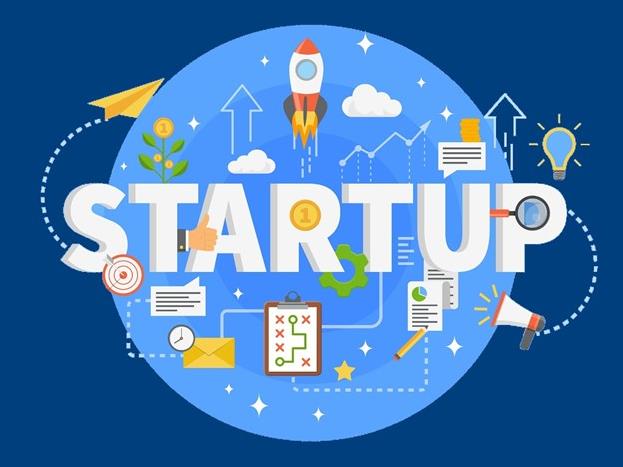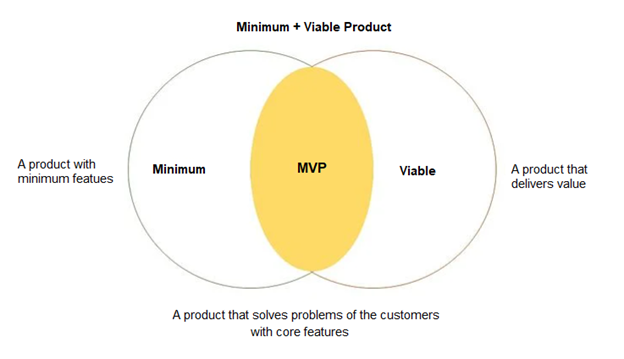Role of MVP Development to Make Your Startup Successful
The IT industry is dynamically growing, providing new software releases at a thrilling pace.
However, several factors like lack of investments, public indifference, market demand, and more, act as the deciding factors towards the success of a startup.
According to industry estimates, 20% of startups fail in the first year of their existence, and due to various reasons, 2/3rd of startups are not able to bring positive incomes. Considering the startup failure rates due to the traditional way of development, entrepreneurs have started adopting MVP development strategies.
Covered in this post are insights on minimum viable software development and its numerous benefits that make a startup successful.
What is MVP Software Development?
Minimum Viable Product Development is the process of building a new product with minimum features and core functionalities to test the market response. After collecting the feedback from early adopters, the development of a full-fledged product is done.
What does “Viable” mean?
Viability means delivering enough value to users, i.e. what a product does is more important than how it does it. A viable product is what meets user demands by performing one main function with its core functionality.
Though, for a successful MVP, balancing between “minimum” and “viable” is pivotal. Let’s explain it with an example:
- Problem to be solved - A user wants to rent a commercial space
- Minimum - A board with on rent sign is put on the space
- Viable - A user-friendly website is built with key features like search, notifications, user profile, images, and more
- Minimum + Viable - A list with offers is collected manually from real estate agents that include pictures, descriptions, reviews, contact related to different properties
Understanding How MVP is Different from Prototype?
It is a bit indistinct to differentiate as the terminologies wholly depend on the background used. In general, MVP is built to understand the needs of the audience and validate the idea and is functional. However, a prototype is a version of MVP that is a non-interactive presentation of how an idea can be perceived in a particular configuration to the customer like- sketches, wireframes, or clickable prototypes.
MVP Software Development Process
MVP can be developed with any of the two methods ‘Agile’ or ‘Waterfall’. Let’s discuss both to help you choose which model is conducive for your own software development project.
- ;Waterfall Model- As the name suggests is a sequential process of software development. Just like in a waterfall, the water progressively falls from one altitude to lower, similarly, the development cycle progresses successively, from one stage to the next. It is also termed as a ‘rigid’ development cycle, as last-minute changes in requirements or design is difficult to address.
- Agile Development Method- Compared to the waterfall development model, the agile model focuses on ‘agility’ and ‘adaptability’ in the development. The agile process of development involves multiple iterative development schedules and the output is improved with every iteration.
Choosing the Right MVP Software Development Process
Waterfall MVP Development Process
- MVP development can only be progressed after each phase is completely developed and tested in the waterfall method.
- The next stage is entirely dependent on the first in this method of development.
- This process is lengthier with a high rate of dependency and the result might not be optimal.
Agile MVP Development Process
- In Agile development, MVP is built in an incremental pattern.
- The Scrum team starts working on the final version of the MVP in a short duration of time known as a sprint.
- In 2-3 weeks, the final version of the product is delivered within a sprint which again enters another sprint.
- Regular stand-up meetings are held to discuss daily progress and to overcome obstacles (if any).
The software can be developed with either of the two methods. However, the agile approach delivers an efficient advantage out of the MVP software development process, in contrast to the traditional waterfall method.
Steps for MVP Software Development
For MVP software development, the following steps are a must:
- Market research
- Get a clear idea about the requirements of the audience
- Build and launch
- Analyze the feedback
Further, you should analyze the project based on the following questions to understand development of MVP:
- What problems can my platform solve?
- How will it be useful to the end-user?
- Why would they use the solution?
Must-Haves and Benefits of MVP
MVP development is done in iterations for identifying market risks, experimenting with testing assumptions, and utilizing the outcomes for further processing. This as a result provides the most validated customer-centric product.
Benefits of MVP:
- Cost-effectiveness
- Customer Research is initially done
- Testing
- Possibility to attract investors
- Development cost for the final product is relatively low
List of MVP must-haves:
- Quantifying the base idea, there should be sufficient features for customers to adopt the product
- There should be a feedback mechanism towards learning about customer’s requirements and filtering their needs for a successful MVP
- Should include future benefits for early adopters

Examples of Successful MVPs
Stories over Google share a myriad of successful MVP-developed startups. Few of them are as follows:
Airbnb - In 2007, two people from San Francisco had a hard time paying their rent. They decided to rent the top floor of their apartment to visitors. The minimum viable product in this situation was built by making a basic landing page with their housing pictures on it. Airbnb got three primary clients and what started as a startup now has $2.6 billion as yearly revenue.
Facebook - The popular social networking site Facebook, started with a basic MVP idea which was to connect students. Users were able to post messages on boards from the same class or college and later other features were added after the success of the MVP.
Instagram - Initially, the MVP of Instagram was focused only on photo filters. Users could take pictures, apply suggested filters, and save their photos in an album on their devices. The application was liked by users and since then it has been updated to include videos, tagging, geolocation, hashtags, and integration with other social networks.
Conclusion
Whether you have a startup or are an experienced entrepreneur, a good MVP software development strategy has the potential to set your venture on the trajectory of success. There are many success stories, apart from the ones mentioned above, that can be checked and defined as an injection to kick-start MVP development as it is the best way forward towards software development.
If you are an entrepreneur who is looking to transform your idea into reality then partner with an MVP development company. Depending on your business requirements an MVP of your product will be developed smoothly with an increased speed to market.
Related Posts
Blackmail is a serious crime that can cause immense stress and fear.
In today's data-driven world, databases form the backbone of countless applications and systems that power businesses across industries.
It’s no longer a hidden fact that social media platforms like Facebook affect the mental health of users.
Relocating an IT company is a significant endeavor that involves careful planning, coordination, and execution.
Today maintaining office security has become an important concern for businesses of all sizes.
A registered office address is a fundamental requirement for any business entity, whether it’s a corporation, limited liability company (LLC), or partnership.














Comments
comments powered by Disqus